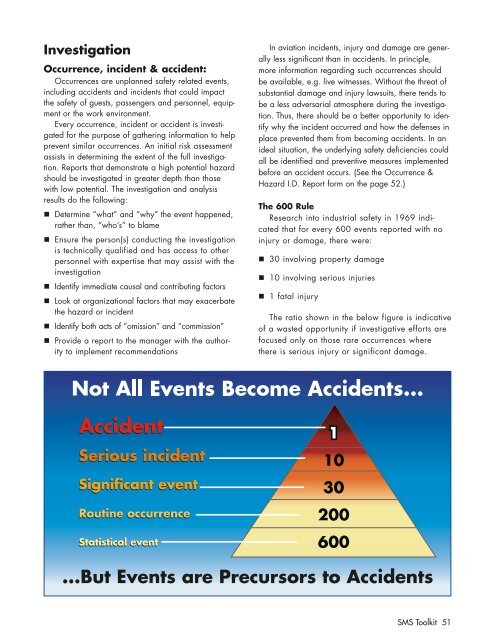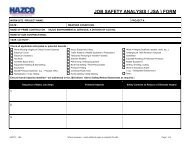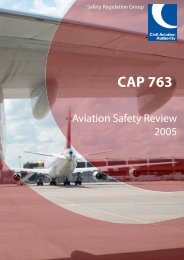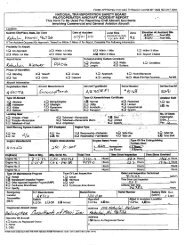International Helicopter Safety Team Safety Management System Toolkit
IHST - Safety Management Toolkit - Skybrary
IHST - Safety Management Toolkit - Skybrary
- No tags were found...
Create successful ePaper yourself
Turn your PDF publications into a flip-book with our unique Google optimized e-Paper software.
Investigation<br />
Occurrence, incident & accident:<br />
Occurrences are unplanned safety related events,<br />
including accidents and incidents that could impact<br />
the safety of guests, passengers and personnel, equipment<br />
or the work environment.<br />
Every occurrence, incident or accident is investigated<br />
for the purpose of gathering information to help<br />
prevent similar occurrences. An initial risk assessment<br />
assists in determining the extent of the full investigation.<br />
Reports that demonstrate a high potential hazard<br />
should be investigated in greater depth than those<br />
with low potential. The investigation and analysis<br />
results do the following:<br />
Determine “what” and “why” the event happened,<br />
rather than, “who’s” to blame<br />
Ensure the person(s) conducting the investigation<br />
is technically qualified and has access to other<br />
personnel with expertise that may assist with the<br />
investigation<br />
Identify immediate causal and contributing factors<br />
Look at organizational factors that may exacerbate<br />
the hazard or incident<br />
Identify both acts of “omission” and “commission”<br />
Provide a report to the manager with the authority<br />
to implement recommendations<br />
In aviation incidents, injury and damage are generally<br />
less significant than in accidents. In principle,<br />
more information regarding such occurrences should<br />
be available, e.g. live witnesses. Without the threat of<br />
substantial damage and injury lawsuits, there tends to<br />
be a less adversarial atmosphere during the investigation.<br />
Thus, there should be a better opportunity to identify<br />
why the incident occurred and how the defenses in<br />
place prevented them from becoming accidents. In an<br />
ideal situation, the underlying safety deficiencies could<br />
all be identified and preventive measures implemented<br />
before an accident occurs. (See the Occurrence &<br />
Hazard I.D. Report form on the page 52.)<br />
The 600 Rule<br />
Research into industrial safety in 1969 indicated<br />
that for every 600 events reported with no<br />
injury or damage, there were:<br />
30 involving property damage<br />
10 involving serious injuries<br />
1 fatal injury<br />
The ratio shown in the below figure is indicative<br />
of a wasted opportunity if investigative efforts are<br />
focused only on those rare occurrences where<br />
there is serious injury or significant damage.<br />
...But Events are Precursors to Accidents<br />
SMS <strong>Toolkit</strong> 51







